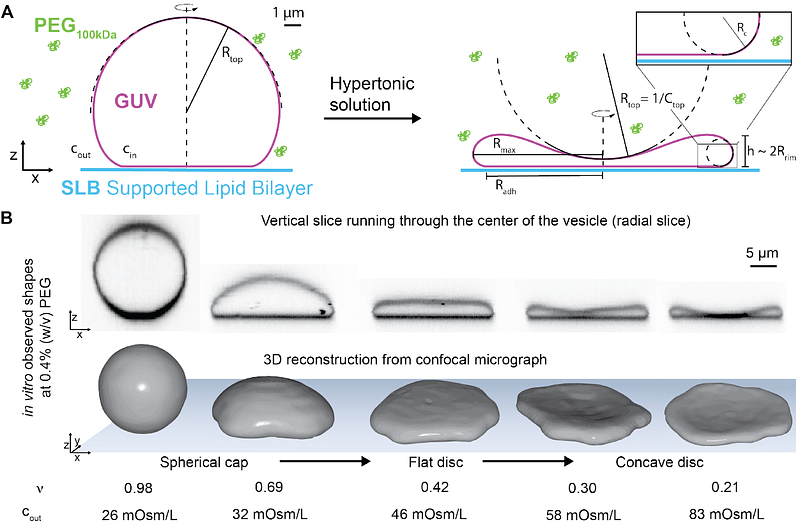Dynamic Shape Modulation of Deflated and Adhered Lipid Vesicles

Dynamic Shape Modulation of Deflated and Adhered Lipid Vesicles
Wolfisberg, G. C.; Agudo-Canalejo, J.; Bittmann, P. C.; Dufresne, E. R.; Style, R. W.; Rebane, A. A.
AbstractLipid membrane-bounded organelles often possess intricate morphologies with spatially varying curvatures and large membrane surface areas relative to internal volume (small reduced volumes). These features are thought to be essential for protein sorting and vesicle trafficking, but challenging to reproduce in vitro. Here, we show that weakly adhered giant unilamellar vesicles (GUVs) can be osmotically deflated to reduced volumes as low as 0.1, similar to what is found in flattened, disc-shaped organelles such as Golgi cisternae and ER sheets. Using shape analysis with the spontaneous curvature model, we determine mechanical parameters including adhesion strength, membrane tension, and pressure of individual vesicles. We find that the rate of shape flattening during deflation is governed by a normalized adhesion strength that combines vesicle size, adhesion energy, and bending rigidity. For highly flattened disc-like vesicles, we identify a geometric relationship that allows the adhesion strength to be estimated solely from the vesicle\'s aspect ratio, size, and bending rigidity. These results provide a quantitative experimental platform for bottom-up studies of membrane shaping mechanisms and shape-dependent phenomena, such as curvature-mediated protein sorting.